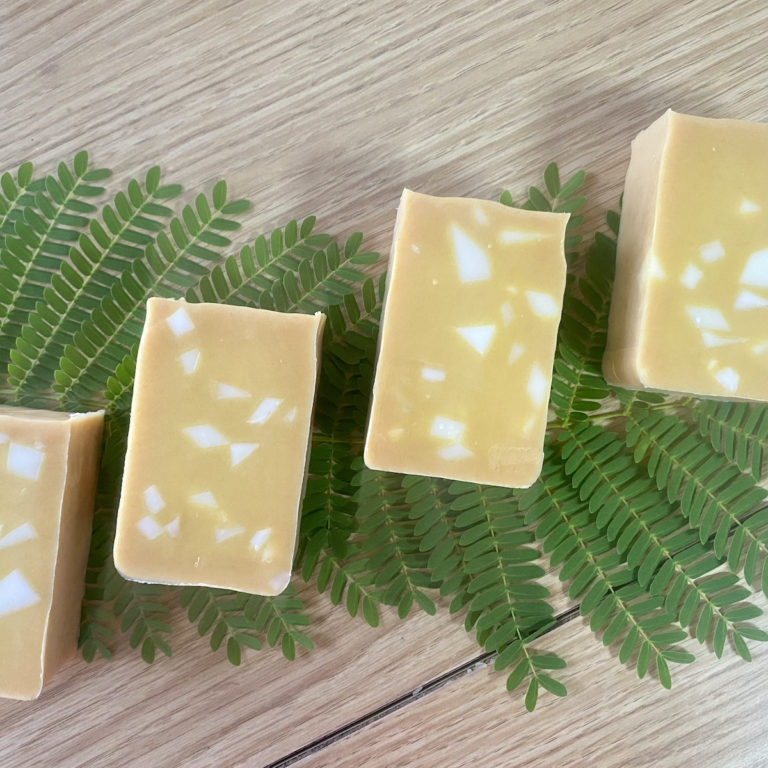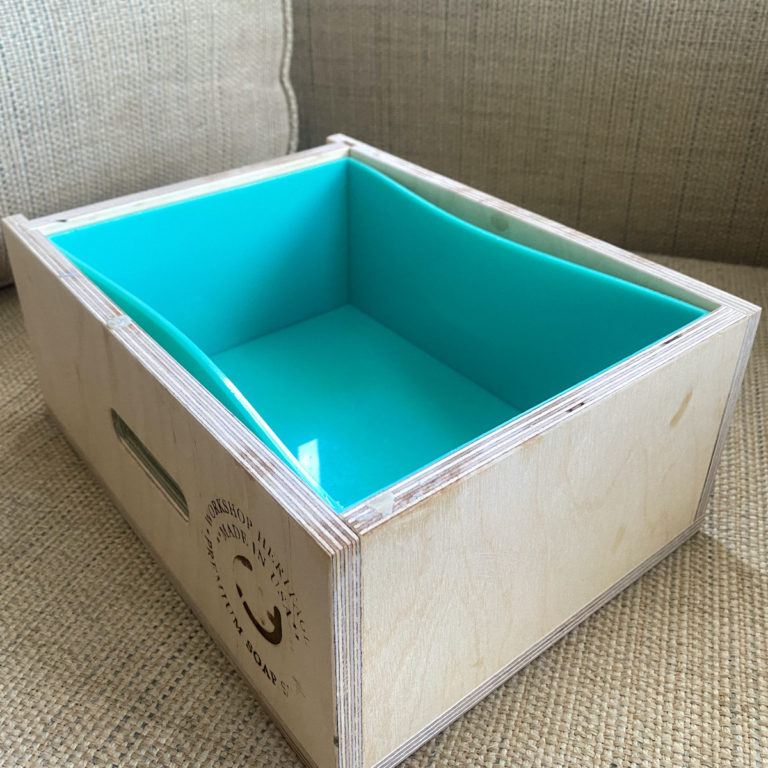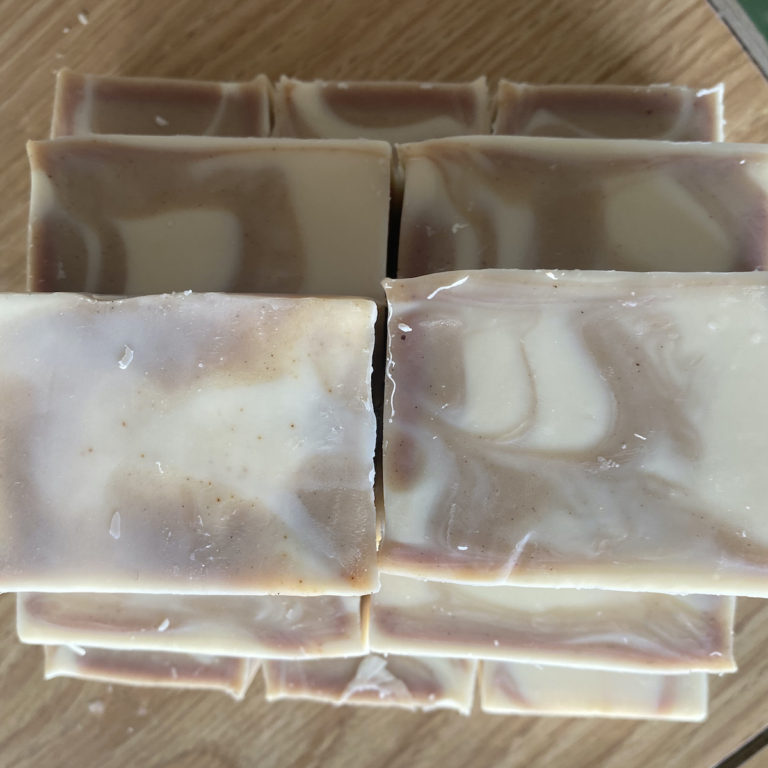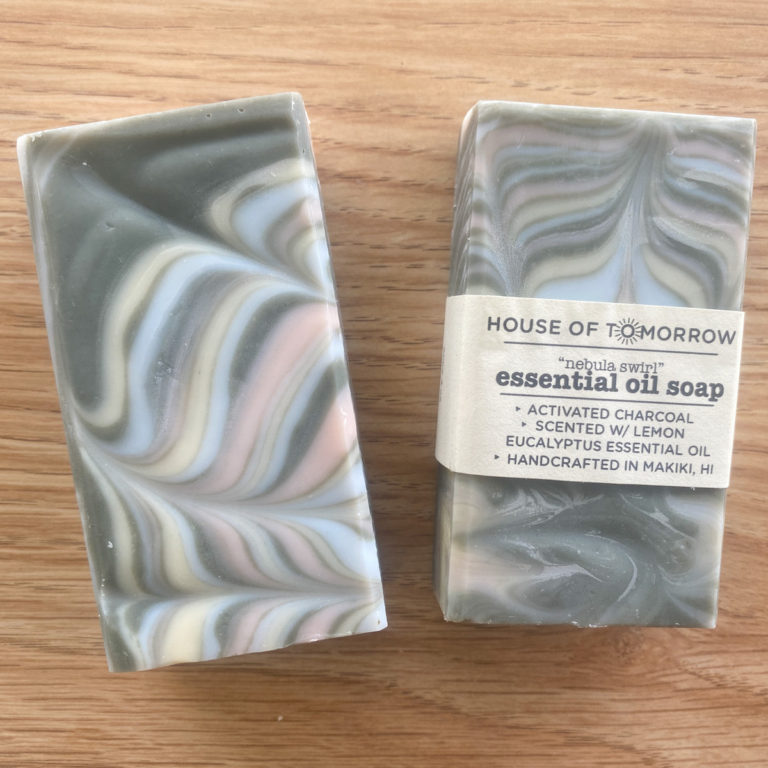When To Wrap Homemade Soap – 6 Secrets To Perfect Timing
Knowing when to wrap homemade soap can make the difference between a great experience for the receiver/user and a bad one.
Get it right and your bar of soap will be hard, smell great, and last a long time in the shower. Get it wrong and your soap might be soft or sweaty looking, and the wrapper might even feel soggy.
When To Wrap Homemade Soap For Best Results
Soap should be fully cured before you even think about wrapping. What exactly does “cured” mean? It means your soap batter has saponified, formed the crystalline structure that holds it all together, and much of the water you used in the soap making process has evaporated.
This hopefully leaves a nice, hard bar of soap that will last through many uses.
The longer you make soap, the more aware you’ll become of how your soap looks and feels when it’s well cured.
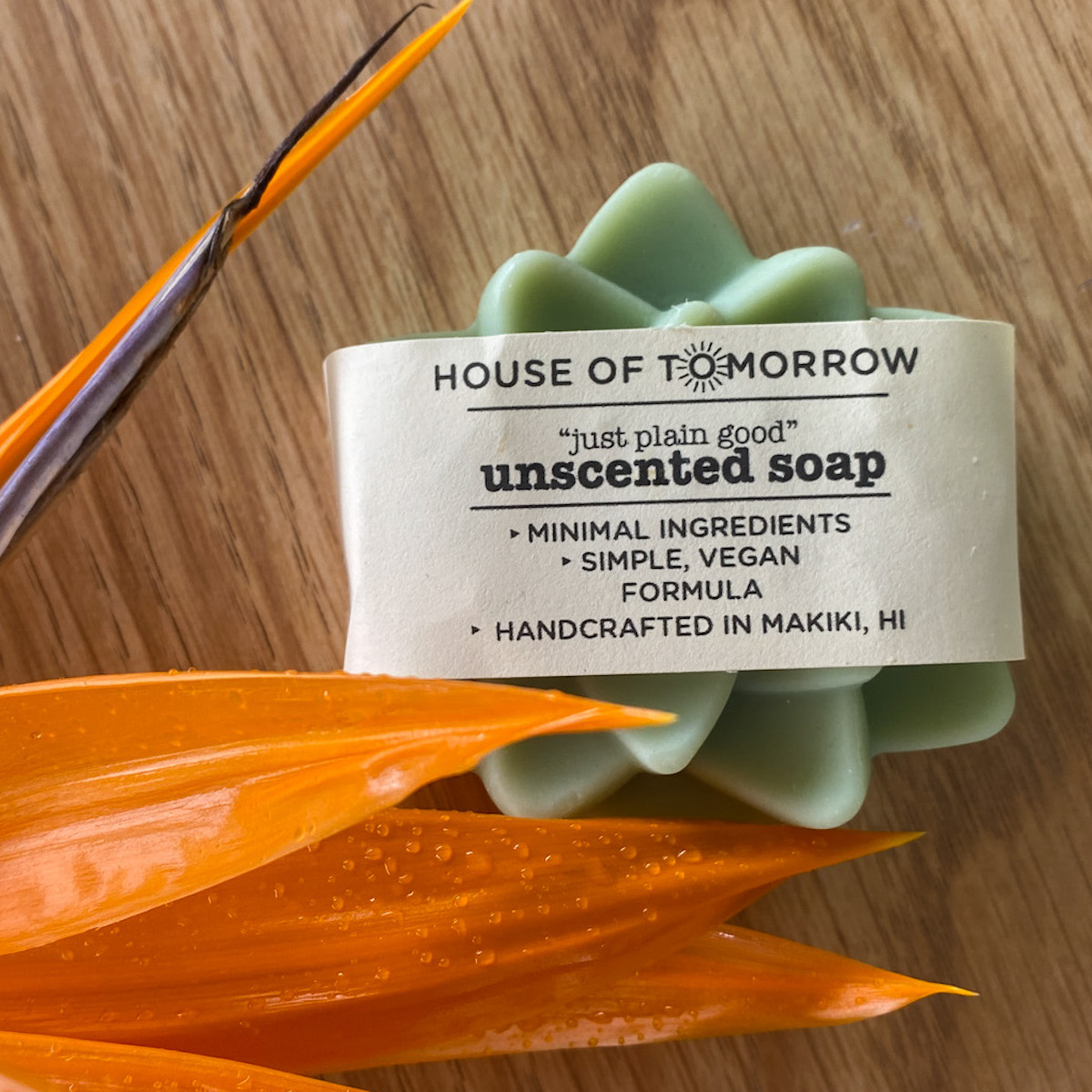
1. Consider What The Weather Has Been Like
Many people recommend a standard 4-6 weeks for a full cure, at which point soap should be ready to wrap. But that’s just theoretical.
One real-life factor that can mess up that standard 4-6 week timeline, is weather.
Rainy or humid weather can cause soap take longer to harden and cure. So if you’re in a very wet area, your soap will take longer to be ready than a soaper who lives in a dry area. And your rainy-season soap might take longer to harden and cure than months where the air is naturally dryer.
Rainy or humid weather can also cause sweating on your soap, even after a full cure. Avoid wrapping soap until the sweat has all evaporated.
2. Water Discount Affects When To Wrap Homemade Soap
Water discount affects how quickly your soap cures, and that obviously affects how quickly you can or can’t wrap.
Soaps with a higher water discount (meaning the soap was formulated with less water to begin with) will cure quicker.
And the opposite holds true for soaps that you used a high amount of water during the soaping process.
3. Check For Problems With The Cure Before Wrapping
Problems to look out for that could indicate something went wrong with the curing proces:
- An oily layer on your soap – that oil may absorb into your soap, but if it doesn’t, you’re better off sticking that soap into your personal “ugly soap” stash.
- Softness – give it another 1-3 weeks to firm up. If it doesn’t your lye may have been too weak or you may have miscalculated ingredients. You can keep this for personal use.
If any of these conditions are present, you know you don’t want to wrap your soap yet.
4. Wrapping Material Affects When To Wrap Homemade Soap
Some wrapping materials aren’t “breathable”. This can trap moisture the bar releases during, and even after the curing process. So knowing when to wrap homemade soap depending on the material you’re using to wrap, is really important.
Paper

Paper is a fairly breathable material. The thinner the paper is, or the more open/loose the wrapping is, the more so that’s true.
Uncoated paper takes just 2-6 weeks to decompose in a landfill and can be easily recycled.
The downside are that some papers can get yucky looking after being handled (at craft fairs and farmer’s markets, for example) because thinner papers don’t hold their shape. To remedy this, experiment with different weights of paper until you find what works best for you.
You can wrap in paper sooner than you can in something like plastic, because the soap can still breathe and cure, especially if its not fully wrapped, as pictured above.
If you’re wrapping cigar band style or using some other style that leaves soap exposed, technically, you can wrap soap as soon as 1 week. But I think its best to wait 4 weeks if you have the patience, because by that point, the soap will have shrunken quite a bit, and your paper band will be loose.
If you’d rather have your soaps completely wrapped with no exposed areas, check out these 2 videos for some inspiration:
If you want to completely wrap your soap in paper as shown in any of the videos above, wait at least 4-6 weeks to do so because it will be harder for moisture to escape.
Plastic
I discourage people from wrapping in plastic primarily because of the environmental costs.
Another downside to using plastic is it can make your soap funky if it’s not fully cured. Plastic is not a breathable material. This could potentially result in trapped moisture if you wrap before the full cure.
People who make melt and pour soaps often use plastic because melt and pour notorious for attracting moisture due to extremely high glycerin content.
For customers who don’t like the idea of their soap being touched by others, plastic is a way that pretty much guarantees the soap is clean, though other wrapping methods that fully cover the soap can do a similarly good job.
If using plastic, wait for the full cure (4-12 weeks depending on how the weather has been during your curing process).
Biolefin Shrink Wrap
This is a more earth friendly alternative to shrink wrap.
You’ll need to use a shrink wrap system with this, or biolefin shrink wrap bags and a heat gun. The upfront investment for a shrink wrap system is higher than many other soap wrapping alternatives but the system should last you for a long, long time. It may be worth it if you’re selling in high quantities.
Using biodegradable shrink wrap is a fairly quick process.
Here’s a video showing the process of wrapping bath bombs with biolefin shrink wrap. Even though it’s not soap, she also uses the same method for soap and this video will give you a feel for how quickly you can process multiple bars. Fast-forward to about 4:50 into the video.
Biolefin takes about 2 years to break down, which is not nearly as good as paper, but better than real plastic.
You’ll want to wait for the full cure (4-12 weeks) before you shrink wrap with biolefin, even if it’s considered breathable.
Cellophane
Cellophane is an eco-friendly alternative to plastic. It looks like plastic, and offers the same benefit of being able to see the product through the wrapping material.
Cellophane is a porous material so it’s considered breathable.
The main downside is it’s generally less pliable than plastic.
Because of this lack of flexibility, cellophane can start to look beat up after being handled a handful of times.
I haven’t tried this myself, but apparently you can apply heat to cellophane to shrink it, which would allow you to tighten up wrapping that starts to look too beat up.
It breaks down in 28-120 days depending on whether it’s the coated or uncoated variety.
Soap can be wrapped in cellophane when fully cured (4-12 weeks).
Kraft Soap Boxes
These are a quick and easy way to wrap soaps. Kraft boxes offer protection from fingerprints and even falls. It’s also a breathable way to package soap.
The not-so-great element to these soap boxes are that your customer can’t quickly/easily see what the soap looks like. So no matter how pretty your soap is, it’s harder to convey that to customers. This is only an issue with in-person sales, not online where you can showcase pictures and videos.
The material breaks down in roughly 2 months under the right conditions (which is not in the landfill) so encourage your customers to compost it.
Package your soap in kraft boxes when fully cured (4-12 weeks).
5. Wait… Do You Have Air Conditioning?
If you have air conditioning and that’s the environment your soap is curing in, you’re really on a fast track. The consistent dry air means your soap is ready to wrap in 3-4 weeks, no matter what wrapping material you’re using, if you’re using a water discount.
6. Not Every Soap Needs To Be Wrapped
Is this soap for use in your own home? Great! Save yourself the trouble and wrapping materials, and leave it unwrapped.
If you’re gifting soap it makes sense to wrap it if the receiver is someone who appreciates things like that. But be aware there are many people that would love a naked bar of soap!
That same sentiment also applies to customers. If you’re selling soap, it usually makes sense to wrap soap so that the end user knows what ingredients you’re using. And sometimes the style of wrapping plays into the product’s perceived value.
Still, there’s a growing number of people who are looking for packaging-free options as a means to make more environmentally responsible purchasing choices.
Final Thoughts on When to Wrap Homemade Soap
Knowing when to wrap handmade soap is something you’ll get better at with experience.

